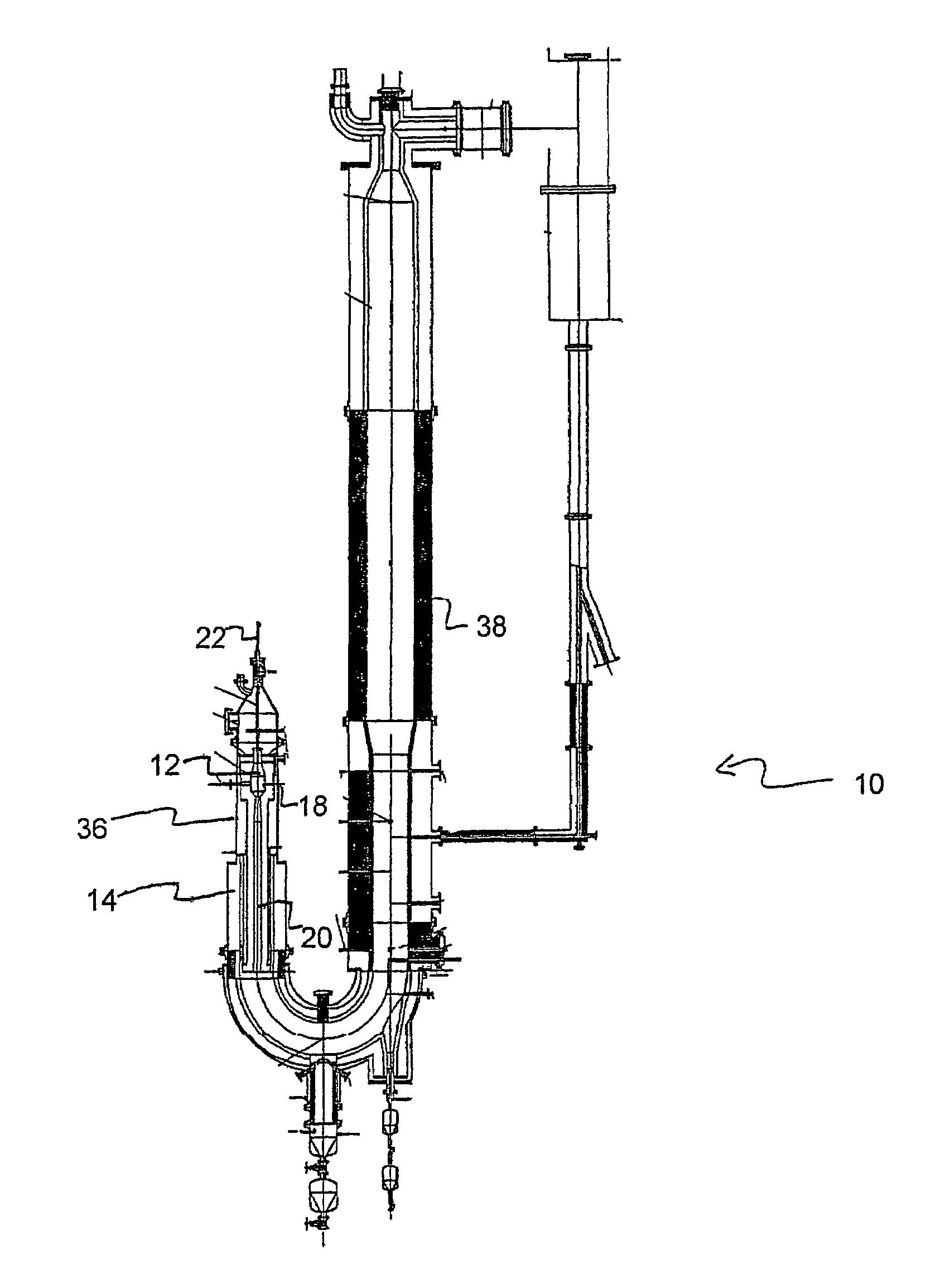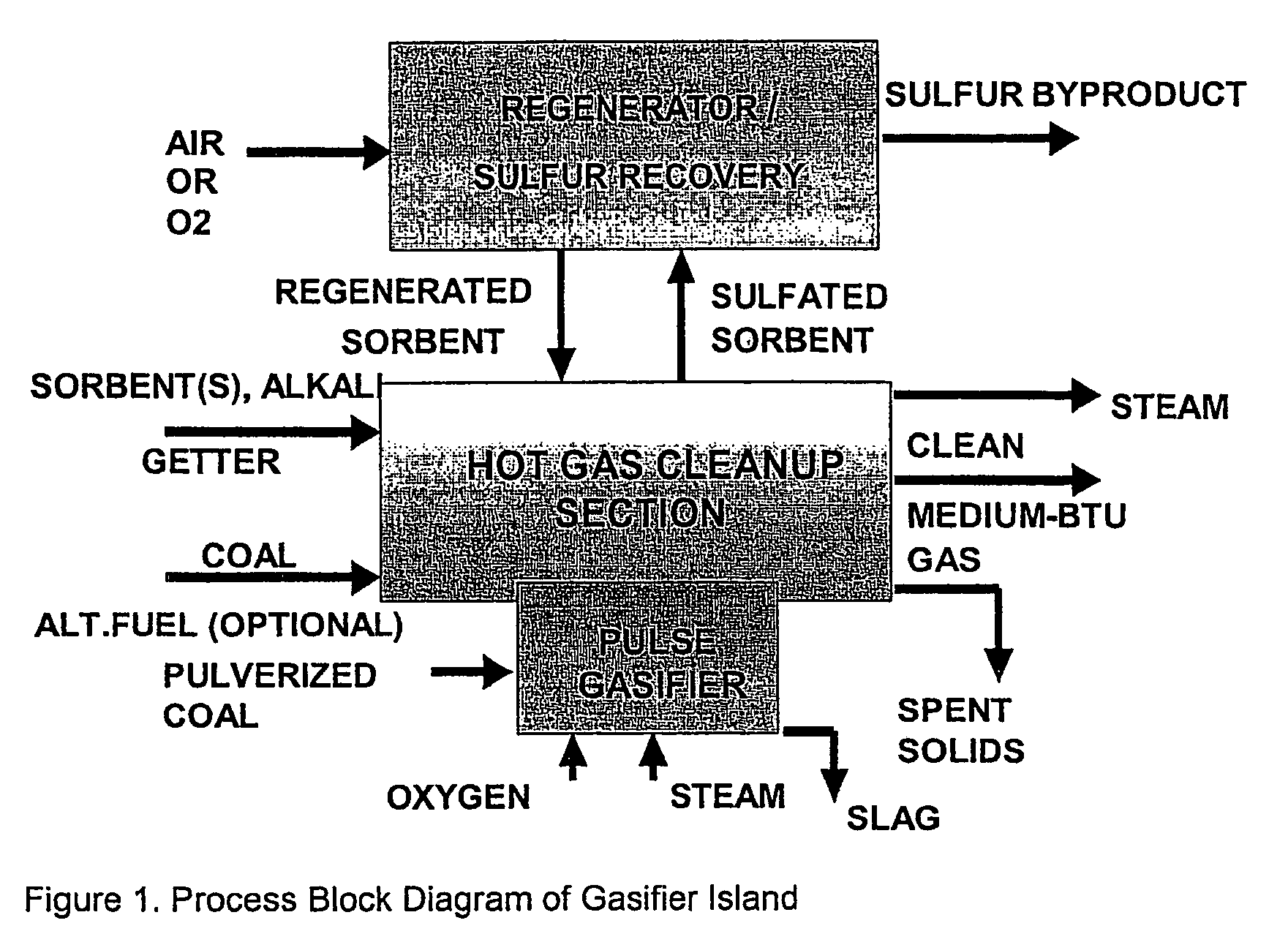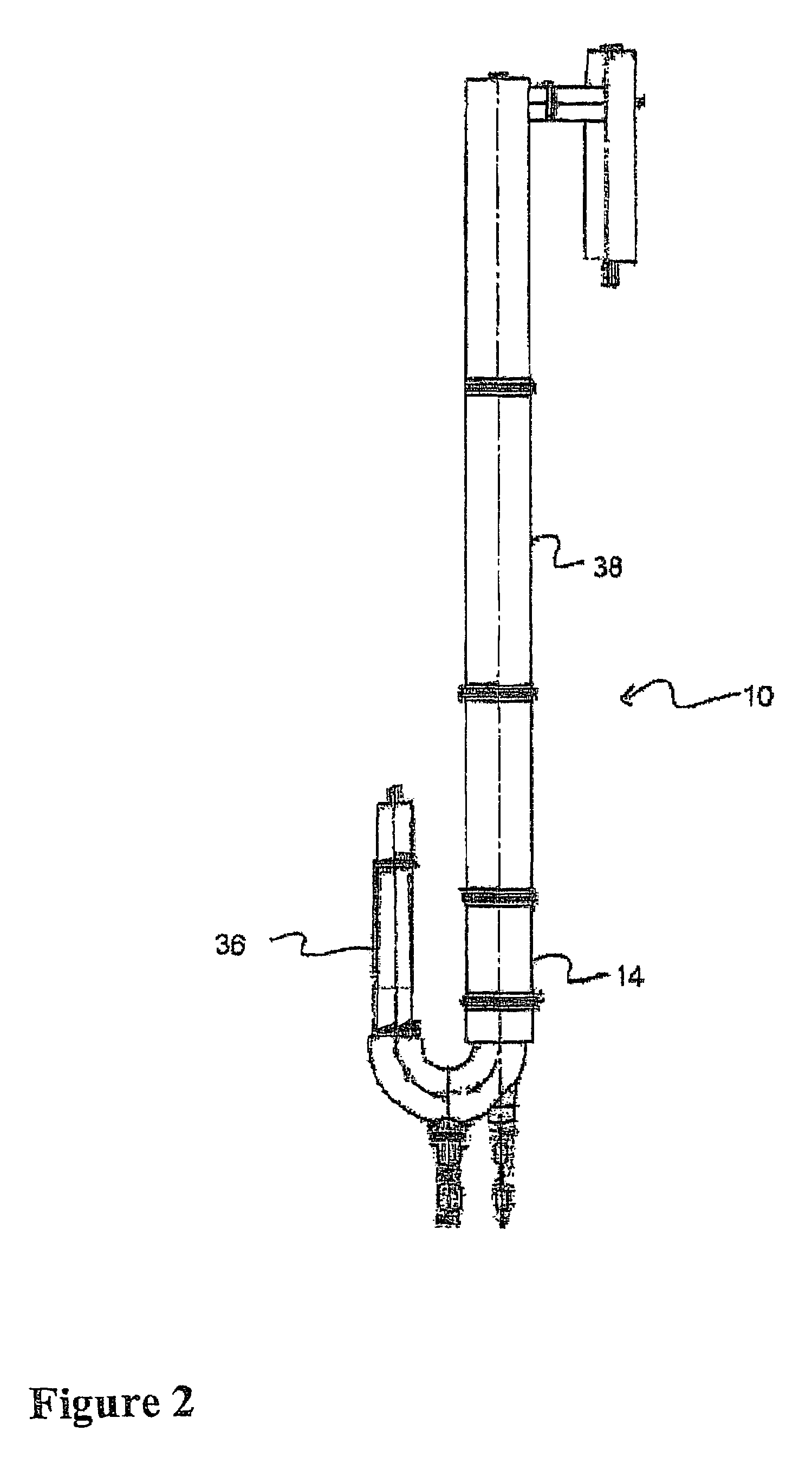Pulse gasification and hot gas cleanup apparatus and process
a gasification and hot gas technology, applied in the direction of combustible gas production, combustible gas purification/modification, machines/engines, etc., can solve the problems of affecting the life of equipment, affecting the use of sorbents, and devices generally failing to remove smaller particulates from streams, etc., to facilitate the use of appropriate sorbents and promote acoustic agglomeration
- Summary
- Abstract
- Description
- Claims
- Application Information
AI Technical Summary
Benefits of technology
Problems solved by technology
Method used
Image
Examples
Embodiment Construction
[0034]It is to be understood by one of ordinary skill in the art that the present discussion is a description of exemplary embodiments only, and is not intended as limiting the broader aspects of the present invention, which broader aspects are embodied in the exemplary construction.
[0035]The present invention is generally directed to an innovative pulse gasification system that overcomes many of the limitations of prior pulse gasification systems and may be configured to comply with stipulated new emissions target of one-tenth of NSPS. For example, in one embodiment, the system and process of the present invention can be configured to emit less than about 0.12 lb / MMBTU of sulfur dioxide, less than about 0.06 lb / MMBTU of nitrous oxides (NOx), and / or less than about 0.003 lb / MMBTU of particulates.
[0036]In one embodiment, the pulse gasifier system includes a pulse unit for first-stage gasification, a U-tube arrangement for slag removal, and may also include a vertical entrained flow s...
PUM
| Property | Measurement | Unit |
|---|---|---|
| exit temperature | aaaaa | aaaaa |
| frequency | aaaaa | aaaaa |
| exit temperature | aaaaa | aaaaa |
Abstract
Description
Claims
Application Information
 Login to View More
Login to View More - R&D
- Intellectual Property
- Life Sciences
- Materials
- Tech Scout
- Unparalleled Data Quality
- Higher Quality Content
- 60% Fewer Hallucinations
Browse by: Latest US Patents, China's latest patents, Technical Efficacy Thesaurus, Application Domain, Technology Topic, Popular Technical Reports.
© 2025 PatSnap. All rights reserved.Legal|Privacy policy|Modern Slavery Act Transparency Statement|Sitemap|About US| Contact US: help@patsnap.com



